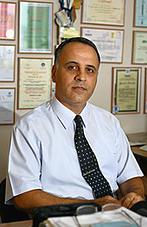


Speech Title: Investigation on Structure and Mechanical Properties of Layered Composite Materials and Reinforced With Si-C Particles
Abstract:The technologies of producing metallic matrix composites and SiC reinforced particles are determined by the gas/liquid and liquid/solid particle transfer. A new technology of producing particle-reinforced composites is presented, the preparation facility of the alloy-particle suspension is connected directly to a continuous casting installation equipped with a water-cooled Cu catalyst. Theoretically, the values of the technological parameters necessary for the homogenous distribution and the incorporation of the reinforcement particles are presented.
The investigation and the characterization of the achieved composites was made from the standpoint of mechanic properties (tear resilience, hardness), chemical-structural properties (scanning electron micrograph (SEM) and energy dispersive X-ray spectroscopy (EDX)), and tribological properties (linear wear intensity, friction). Furthermore, the density difference and the size of the reinforcement particles influence the critical velocity of the SiC particles at the gas/liquid interface. This critical displacement rate of the solidification front is also decisively influenced by the difference between the interphasic tensions. The tear resilience to the base alloy employed is doubled for some composites samples. Furthermore, the higher hardness of the matrix in the vicinity of its contact area with the particle confirms the formation of chemical compounds at the interface. The composites reinforced with hard SiC particles have an optimum resilience to abrasive wear.
Layered composite materials significantly improved the mechanical process of fracturing, which means better fracture strength, while preserving surface properties such as hardness, resistance to wear and resistance to high temperatures. The properties are significantly influenced by the interphase mass transfer at the surface matrix-fiber reinforcement. We developed a mathematical model to determine the molar flux at the interface in stationary and in a nonstationary regime. The technological parameters are: hydraulic pressure, reinforced material, alloy type, fiber diameter, mass ratio between the reinforcement and the composite masses and mould preheating temperature. A mould patented in Romania was mounted on a hydraulic press to obtain the samples. We studied the material structure, matrix and fiber element distribution, metallic matrix element distribution and matrix and fiber element content variation. The results recorded revealed a 75% to 120% increase of the fracture strength, which means an improvement of the mechanical process of fracturing.
We concluded that the reinforcement material, mass ratio and fiber diameter have significant influences on the fracture strength.